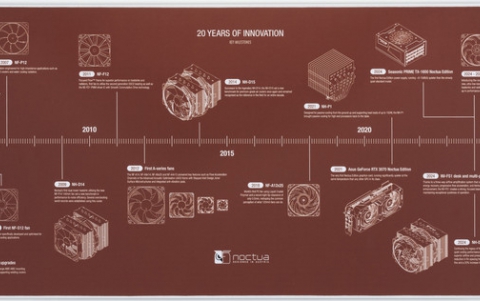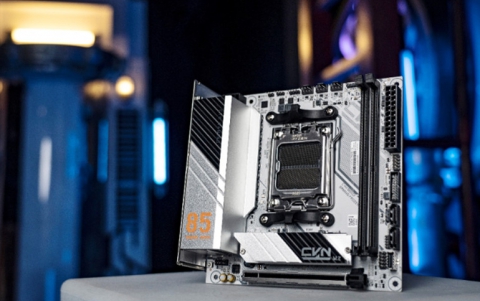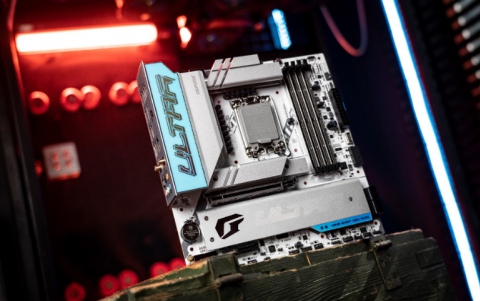The secrets of quality in photography
1. Page 1
Quality related to the photographs taken by a digital camera is a resultant of different parameters such as the lens, the image sensor and the digital signal processing algorithms, and not just a matter of pixels.
Manufacturers often exploit consumers’ ignorance when implying that a high resolution provided by a camera ensures better quality in the photographs taken. This is by no means true, as image quality relies on numerous other factors than the one mentioned above. One of the greatest problems met with image sensors is that each and every photosensor element found on their surface is capable of collecting information on just one color. The colors left, are calculated only through complex mathematical methods (interpolation) so that the final image is produced with the highest possible color-level. Some manufacturers have been making use of similar techniques to increase image resolution, but when it comes to quality, results remain doubtful.
Artificial color information
 In reality, a 6 Megapixels image sensor camera, does not produce images at
a 6 million pixel resolution, as its image sensor is limited to two colors
only: white and black. To produce a colored picture, tiny colored filters corresponding
to the three basic colors, that is the red, the green and the blue (RGB), are
placed over the light gates. The typical ratio normally includes 25% of red
color, 50% of green and 25% of blue, meaning that the image sensor of such
a camera, includes 1.5 million light gates for the red color, the same number
for the blue, whereas the remaining 3 million are used for the green light,
since human vision is more sensitive to this shade.
In reality, a 6 Megapixels image sensor camera, does not produce images at
a 6 million pixel resolution, as its image sensor is limited to two colors
only: white and black. To produce a colored picture, tiny colored filters corresponding
to the three basic colors, that is the red, the green and the blue (RGB), are
placed over the light gates. The typical ratio normally includes 25% of red
color, 50% of green and 25% of blue, meaning that the image sensor of such
a camera, includes 1.5 million light gates for the red color, the same number
for the blue, whereas the remaining 3 million are used for the green light,
since human vision is more sensitive to this shade.
Yet, if we wished to produce an image correctly, the way it happens with
analog photos in other words, we would have to make use of 6 million light
gates for
each main color, equivalent to a total resolution amounting up to 18 million
pixels (18 Megapixel). Such a thing of course is non-existent since, in reality,
we are capable of registering only 1/3 of the information required. The remaining
2/3 are being artificially produced with the help of highly complex algorithms
and are afterwards added to the existing information, to produce thus an
as close to the picture representation as possible.
Therefore, the quality of the final result is dependent to a great extend
on the digital processor as well as the algorithms used.
Compressed pixels
 The resolution of digital cameras is being continuously increased, and a 4
to 5 Megapixel scale is considered a selection to be suggested when it comes
to consumers’ digital compact cameras, while as far as the professional
digital SLR (Single Lens Reflex) solutions are concerned, resolution may reach
up to 16.7 Megapixels (ie Canon EOS-1Ds Mark II). The dimensions of the image
sensors vary and are normally smaller than the ones of the analog film ( 24mm
height X 36mm width). The digital SLR cameras with a full frame image sensor
like the Kodak DCS Pro 14n (CMOS sensor 13.89 Megapixels) are an exception
to the rule, yet they are designed for professional use. With digital compact
cameras, weight and size are the factors, which greatly affect the ability
to carry and use them easily. These are the two major criteria influencing
selection among the cameras belonging to the specific category. To accomplish
such an aim, manufacturers have utilized small size CCD image sensors, while
to achieve greater resolution they have reduced the size of light gates and
the in-between distances. As a result we are now provided with an ample supply
of tiny light gates, compressed in restricted space. However, such a process
has a negative effect on the dynamic width, as the small size of the light
gates is not sufficient enough when attempting to capture all fluctuations
connected with hues, starting from the darker and ending up to the brighter
sections of a photo. Furthermore, short in-between distances contribute to
the appearance of “noise” in photographs, a fact that is dependent
on the effectiveness of the algorithms used to remove it.
The resolution of digital cameras is being continuously increased, and a 4
to 5 Megapixel scale is considered a selection to be suggested when it comes
to consumers’ digital compact cameras, while as far as the professional
digital SLR (Single Lens Reflex) solutions are concerned, resolution may reach
up to 16.7 Megapixels (ie Canon EOS-1Ds Mark II). The dimensions of the image
sensors vary and are normally smaller than the ones of the analog film ( 24mm
height X 36mm width). The digital SLR cameras with a full frame image sensor
like the Kodak DCS Pro 14n (CMOS sensor 13.89 Megapixels) are an exception
to the rule, yet they are designed for professional use. With digital compact
cameras, weight and size are the factors, which greatly affect the ability
to carry and use them easily. These are the two major criteria influencing
selection among the cameras belonging to the specific category. To accomplish
such an aim, manufacturers have utilized small size CCD image sensors, while
to achieve greater resolution they have reduced the size of light gates and
the in-between distances. As a result we are now provided with an ample supply
of tiny light gates, compressed in restricted space. However, such a process
has a negative effect on the dynamic width, as the small size of the light
gates is not sufficient enough when attempting to capture all fluctuations
connected with hues, starting from the darker and ending up to the brighter
sections of a photo. Furthermore, short in-between distances contribute to
the appearance of “noise” in photographs, a fact that is dependent
on the effectiveness of the algorithms used to remove it.













